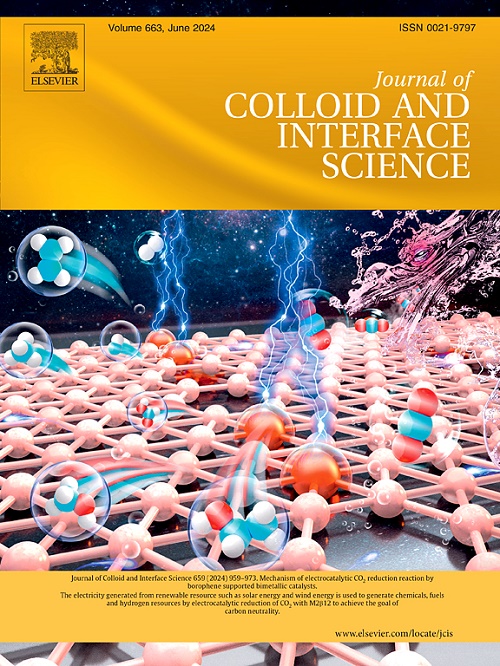Tantalum-induced reconstruction of nickel sulfide for enhanced bifunctional water splitting: Separate activation of the lattice oxygen oxidation and hydrogen spillover
IF 9.4
1区 化学
Q1 CHEMISTRY, PHYSICAL
引用次数: 0
Abstract
Designing highly active and stable bifunctional catalysts for the oxygen evolution reaction (OER) and hydrogen evolution reaction (HER) under alkaline conditions is crucial for sustainable overall water splitting. Herein, we present a targeted reconstruction of Ni3S2 by introducing tantalum, achieving remarkable overall water splitting performance through the separate activation of the lattice oxygen mechanism and hydrogen spillover. Electrochemical Mass Spectrometry and in-situ Raman spectroscopy reveal that tantalum induces Ni3S2 to reconstruct into nickel hydroxide during OER, thereby enhancing catalytic activity via the activation of the lattice oxygen mechanism. In the corresponding HER, tantalum promotes the reconstruction of Ni3S2 into oxysulfide, facilitates hydrogen spillover, and acts as an anchor to shorten the spillover distance, improving the HER catalytic performance, as verified by the kinetic isotope effect and theoretical calculations. Therefore, the catalyst-based anion exchange membrane water electrolyzer system achieves a current density of 1 A cm−2 at just 1.97 V, maintaining continuous operation for 500 h. This study offers new insights into the design of bifunctional catalysts, advancing the development of efficient and robust overall water splitting catalysts.

钽诱导硫化镍重构以增强双功能水分离:分别激活晶格氧氧化和氢溢出。
为碱性条件下的氧进化反应(OER)和氢进化反应(HER)设计高活性、高稳定性的双功能催化剂对于可持续的整体水分离至关重要。在此,我们通过引入钽对 Ni3S2 进行了有针对性的重构,通过分别激活晶格氧机制和氢溢出,实现了显著的整体水分离性能。电化学质谱和原位拉曼光谱显示,钽能诱导 Ni3S2 在 OER 过程中重构为氢氧化镍,从而通过激活晶格氧机制提高催化活性。在相应的 HER 中,钽促进 Ni3S2 重构为氧硫化物,促进氢气溢出,并作为锚缩短溢出距离,提高了 HER 催化性能,这一点已被动力学同位素效应和理论计算所验证。因此,基于催化剂的阴离子交换膜水电解槽系统在 1.97 V 的电压下就能达到 1 A cm-2 的电流密度,并能连续运行 500 h。这项研究为双功能催化剂的设计提供了新的见解,推动了高效、稳健的整体水分离催化剂的开发。
本文章由计算机程序翻译,如有差异,请以英文原文为准。
求助全文
约1分钟内获得全文
求助全文
来源期刊
CiteScore
16.10
自引率
7.10%
发文量
2568
审稿时长
2 months
期刊介绍:
The Journal of Colloid and Interface Science publishes original research findings on the fundamental principles of colloid and interface science, as well as innovative applications in various fields. The criteria for publication include impact, quality, novelty, and originality.
Emphasis:
The journal emphasizes fundamental scientific innovation within the following categories:
A.Colloidal Materials and Nanomaterials
B.Soft Colloidal and Self-Assembly Systems
C.Adsorption, Catalysis, and Electrochemistry
D.Interfacial Processes, Capillarity, and Wetting
E.Biomaterials and Nanomedicine
F.Energy Conversion and Storage, and Environmental Technologies

 求助内容:
求助内容: 应助结果提醒方式:
应助结果提醒方式:


